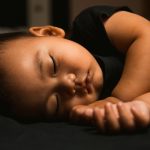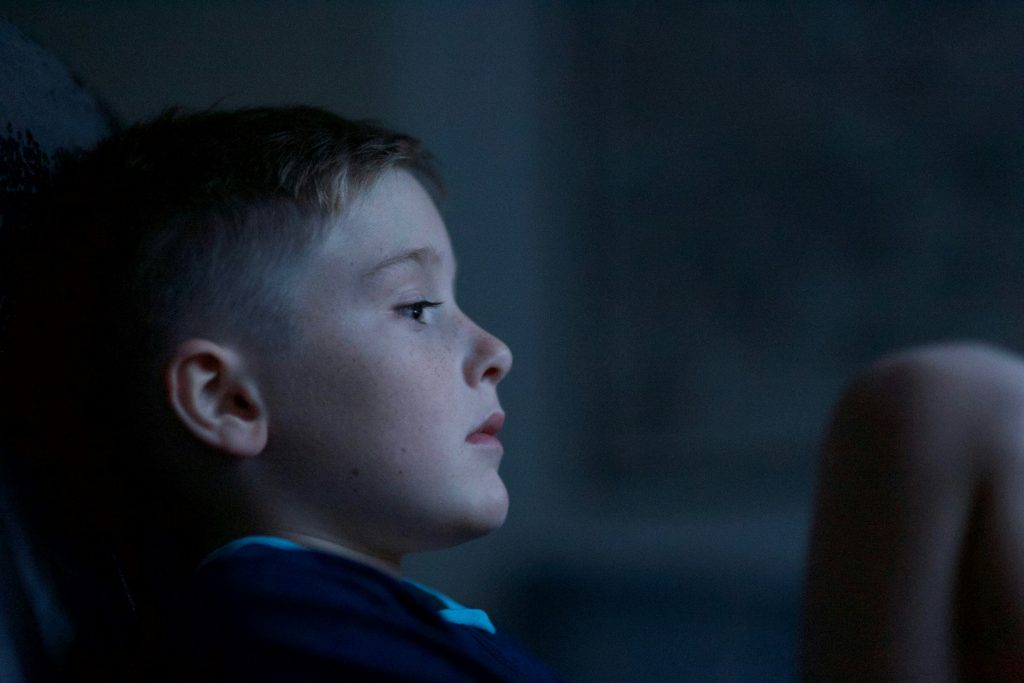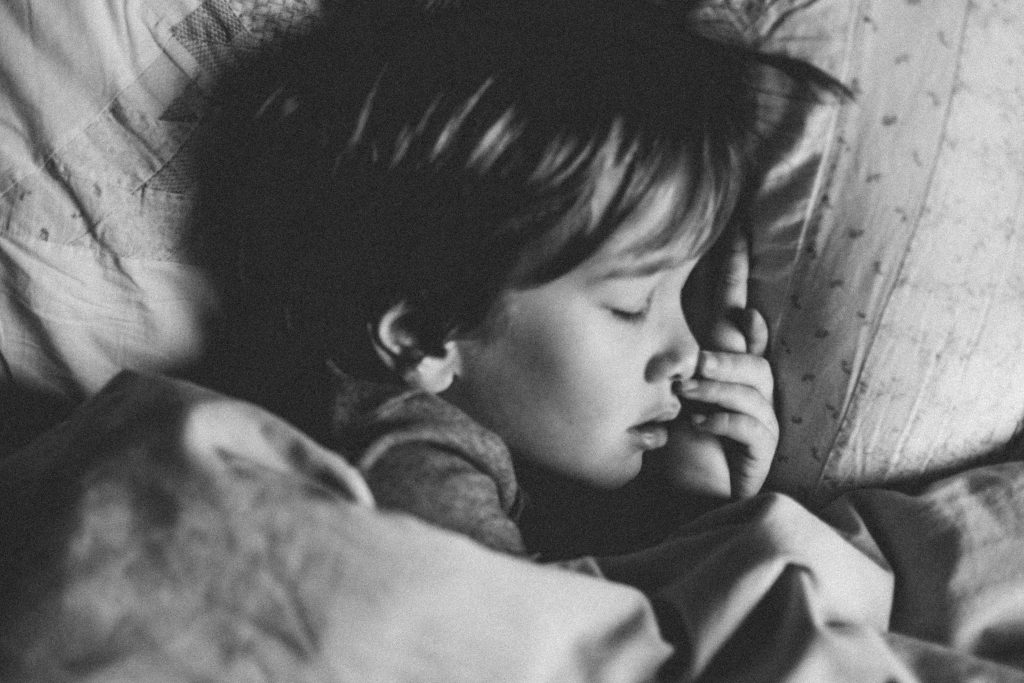
We are learning more and more about how essential sleep is to both physical and mental health. However, there is still much we don’t understand about this relationship. We don’t fully understand the extent to which poor sleep in early years can impact the risks of developing physical and mental conditions. There is some evidence to suggest that sleep quality in childhood may influence the risk of experiencing mental health difficulties during adolescence (Short et al., 2019).
To investigate these relationships, we need data with a lot of detailed information on individuals taken over long periods of time, which can be a challenge. Thankfully, cohorts such as the Avon Longitudinal Study of Parents and Children (ALSPAC) exist, allowing studies like the “Role of Inflammation in Short Sleep Duration Across Childhood and Psychosis in Young Adulthood” (Morales-Muñoz et al, 2024) to take place.
Previous studies have shown that there is an association between sleep duration in childhood and later experiences of psychosis, however, both longer and shorter sleep have been associated with psychotic experiences (Morishima et al., 2020). At the Mental Elf, we have also reported on findings that suggest that exposure to light at night time may be associated with risks of psychosis. More work is needed to understand this relationship, as well as to understand persistent short sleep in childhood on its own. Studies disagree about the prevalence of persistent short sleep in childhood (Ranum et al., 2021).
So this new study by Morales-Muñoz and colleagues (2024) looked at parent-reported sleep duration in over 12,000 children between 6 months and 7 years of age. At age 24, 4,000 of these children had taken part in an interview regarding psychotic experiences which allowed this study to investigate the potential link between persistent short sleep duration in childhood and psychotic experiences in young adulthood.
There are many different factors to consider when you are investigating childhood sleep and future mental health experiences, including potential genetic factors, the family environment at different ages, socioeconomic factors and other environmental factors. This study had a focus on the potential influence of inflammation, which we have reported on previously as a potentially causal influence on the pathogenesis of psychosis. Inflammation has been suggested to be a factor influencing the link between sleep and psychosis, but there have been few studies looking at all three together.

Sleep is fundamental to both our physical and mental functions.
Methods
This study was undertaken using ALSPAC. A well characterised sample of over 13,000 children and some parents, which follows the cohort across the years and has a large range of information, including self-report questionnaires, interviews, and biological measures, at various timepoints in their lives. They used subjective measures of sleep duration at ages 6, 18 and 30 months and at 3.5, 4 to 5, 5 to 6, and 6 to 7 years. Sleep duration was determined by parents reporting when the child went to bed and woke up.
Individuals who had experienced psychotic experiences and/or psychotic disorders were identified through a Psychosis-Like Symptoms Interview which was undertaken at age 24. During this interview, any questions that were answered “yes” or “maybe” would be followed up by the interviewer with further supplemental questions (Horwood et al., 2008).
Latent class analysis was used to group individuals based on their patterns of sleep duration into four classes, and those with persistent short sleep duration were of particular interest to this study, though there does appear to be an error in the labelling of the graphs which makes this hard to interpret. Logistic regression was used to investigate the association between the sleep classes and psychotic experiences/disorders at age 24. There are many factors which could potentially impact this association, such as environmental factors and neurodevelopmental conditions, which were included in their statistical models.
Inflammation markers, C-Reactive Protein (CRP) and Interleukin-6 (IL-6) were measured through blood samples taken at age 9 and CRP was also available at age 15. These are proteins which become elevated in the presence of inflammation or infection in the body (Sproston & Ashworth., 2018).
Pathway analysis was used to include the inflammation markers into analytic models, and to determine whether these markers influence the association between sleep classes and psychotic experiences.
Results
The researchers used sleep duration data from 12,394 children to investigate trends in sleep, and their analysis determined that the children were best grouped into four different classes of sleep duration: persistent shorter sleep, persistent short-intermediate sleep, persistent intermediate-longer sleep and persistent longer sleep. There was a difference of about three hours between the persistent shorter sleep and persistent longer sleep classes. Most children (about 62%) were classed as persistent intermediate-longer sleepers and only 2.4% of children were classed as persistent shorter sleepers. The researchers used the majority class as a comparison for the subsequent analysis.
Investigating the potential association between persistent shorter sleep duration and psychotic experiences/disorders at age 24, the analysis was adjusted for neurodevelopmental conditions (including autism, which can have a significant influence on sleep) and for early adversity (including experiences of abuse, housing issues) as well as for other factors which could influence both sleep and psychosis.
This adjusted analysis showed:
- That there was a significant (unlikely to be by chance) association between the persistent shorter sleep class and both psychotic experiences and psychotic disorders.
- Individuals who fell into the persistent shorter sleep class were around two times more likely to have psychotic experiences, and more than three times more likely to have a psychotic disorder at age 24.
- There were no significant associations found between psychotic experiences/disorders and the other sleep classes.
When looking at the potential impact of inflammation, the researchers looked at the association between persistent shorter sleep and the inflammation markers taken at 9 and 15 years old (CRP only). They found the persistent shorter sleep class had significantly elevated IL-6 at age 9, but there was no influence on CRP at ages 9 or 15.
The researchers also investigated the possibility that the association between persistent shorter sleep class and psychotic experiences/disorder was partially driven by elevated IL-6 or CRP.
They found that higher levels of IL-6 (only measured at age 9) did partially mediate the association between persistent shorter sleep class and both psychotic experiences and psychotic disorders at age 24. However, there seemed to be no mediating influence of CRP at ages 9 or 15 on this association.
However, there did appear to be an impact of higher levels of CRP at 9 years old with increased risk of psychotic experiences and psychotic disorders at age 24. This may suggest there is a relationship between CRP and psychosis risk, which is independent of sleep. This supports the previous associations found between CRP and risk of psychosis (Halstead et al 2023).

This research suggests that persistent shorter sleep in childhood may increase the risk of psychotic experiences.
Conclusions
It was found that children with persistent short sleep duration between the ages of 6 months and 7 years were more likely to develop psychosis by the age of 24, with IL-6 levels at age 9, potentially influencing this association. However, this correlation does not completely demonstrate that persistent short sleep and inflammation in childhood causes psychosis in young adults. There is still much more work needed to look at whether short sleep duration can cause psychotic experiences later in life, and what factors influence this potentially causative relationship.
So, don’t panic if your child is a poor sleeper, most children grow out of periods of short sleep (Ranum et al. 2021). Only a small percentage of children fell into the shorter sleep category, and this study was focusing on the potential impacts of persistent shorter sleep. However, this does support previous evidence of the association between sleep disturbances during childhood and mental health impacts and highlights the importance of supporting healthy sleep duration and sleep habits in children to reduce the risk of mental health conditions in the future.

Don’t panic if your child doesn’t sleep long, but if you’re concerned seek further advice.
Strengths and limitations
A major strength of this study, is the use of ALSPAC which has a wealth of information and follows thousands of children from birth to now, with follow-up still ongoing. This has allowed the researchers to look at the impacts of childhood sleep on adult mental health.
The study does have some limitations, one of which is the reliance on self-reported sleep duration (parent-reported sleep duration). Parent-reported bedtime and waking is a subjective measure that likely overestimates how much time children actually spend asleep. This study showed only 2% of children fell into the persistent short sleeper class, whereas another study using objective measures of sleep duration reported around 20% of children were persistent short sleepers (Ranum et al. 2021). Additionally, given the young age of the children, it is likely that night time sleep duration does not reflect their total sleep because napping was not included in this study.
Despite demonstrating an association between shorter sleep and psychosis, the methods used in the study mean that we cannot say that shorter sleep causes psychosis. The researchers attempt to adjust their models for many different variables which could influence sleep and psychosis, but there could be important variables missing, and some variables may have more impact on sleep and psychosis than others, which is not captured here.
The population included in this study was limited in its ethnic and geographical diversity. ALSPAC was recruited from one relatively small area of the UK, meaning the results may not be generalisable to the entire UK population.
Another potential limitation of this study, is the use of inflammatory markers which were measured at a different time point to the sleep duration. This does not negate the associations that were found in this study, however, it does make it more difficult to say the associations are a direct effect of sleep duration on inflammation. There may be other factors influencing this association that are not captured here.
In a perfect research world, we would want to have all the measures at the same time point to investigate direct impacts, as well as at different time points across the lifespan to look at the long-term influences of sleep duration and, as mentioned, objective measures of all of the sleep characteristics that are of interest.

Sleep is complicated. More research is needed to understand it.
Implications for practice
There is still much to explore in the context of childhood sleep and future mental health conditions. Although this study does contribute to our understanding of the importance of good sleep in childhood, more evidence is needed before we can recommend sleep interventions at such a young age or start using measures of inflammation to identify which children may be at risk for future mental health conditions.
Unfortunately, as is the case with most sleep and mental health research, there are so many factors to consider and investigate that it is difficult to suggest changes in practice that we know will have a big impact on those at risk. We cannot yet identify those who would be most at risk, and those who would benefit most from potential interventions and policy changes. However, this field is rapidly expanding, and we should be able to start answering some of these questions more fully soon and responding appropriately.
In my role at the Circadian Mental Health Network, I have been working on identifying what people really want to know when it comes to mental health, sleep and circadian rhythms. Through this project, I’m often asked questions about the relationship between sleep and mental health, and I always have to say that there is still a lot we don’t know. What we do know is, the earlier we can encourage healthy sleeping patterns the better. We may be able to reduce the risks for both mental and physical conditions in adulthood.

Supporting sleep at an early age might reduce lifetime risk of mental health conditions
Links
Primary paper
Morales-Muñoz, I., Marwaha, S., Upthegrove, R., Cropley, V., (2024). Role of Inflammation in Short Sleep Duration Across Childhood and Psychosis in Young Adulthood. JAMA Psychiatry. 2024 81(8) 825-833
Other references
Horwood, J., Salvi, G., Thomas, K., et al. (2008)
IQ and non-clinical psychotic symptoms in 12-year-olds: results from the ALSPAC birth cohort. The British Journal of Psychiatry. 2008 193(3) 185-191
Bowen, E., Heron, J., Waylen, A., et al. (2005) Domestic violence risk during and after pregnancy: findings from a British longitudinal study. BJOG. 2005 112(8) 1083-1089
Morishima, R., Yamasaki, S., Ando, S., et al. (2020) Long and short sleep duration and psychotic symptoms in adolescents: Findings from a cross-sectional survey of 15 786 Japanese students. Psychiatry Research. 2020 293 113440
Ranum, B.M., Wichstrøm, L., Pallesen, S., et al. (2021) Persistent Short Sleep from Childhood to Adolescence: Child, Parent and Peer Predictors. Nature and Science of Sleep. 2021 13 163-175
Short, M.A., Bartel, K., & Carskadon, M.A., (2019) Sleep and mental health in children and adolescents. Sleep and Health. 2019 32 435-445
Sproston, N.R., & Ashworth, J.J., (2018) Role of C-Reactive Protein at Sites of Inflammation and Infection. Frontiers in Immunology. 2018 9 754
Halstead, S., Siskind, D., Amft, M., et al. (2023). Alteration patterns of peripheral concentrations of cytokines and associated inflammatory proteins in acute and chronic stages of schizophrenia: a systematic review and network meta-analysis. The Lancet Psychiatry. 2023 10(4) 260-271


